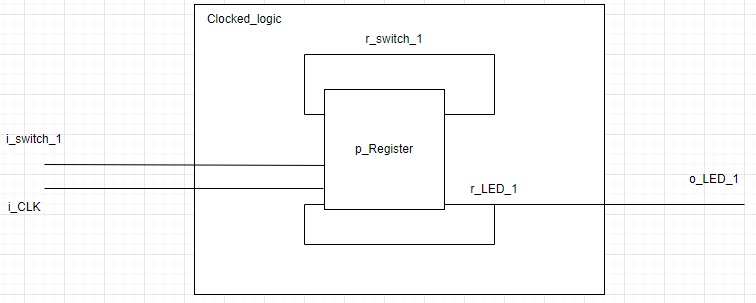The following code is given. My task involves drawing a visual hardware representation that outlines the modules, their associated ports, and the interconnecting signals. Check out my solution below. Am I on the right track?
flipflop.vhdl:
library ieee;
use ieee.std_logic_1164.all;
entity Clocked_Logic is
port (i_Clk : in std_logic;
i_Switch_1 : in std_logic;
o_LED_1 : out std_logic);
end entity Clocked_Logic;
architecture RTL of Clocked_Logic is
signal r_Switch_1 : std_logic := '0';
signal r_LED_1 : std_logic := '0';
begin
-- this clocked-sequential process starts when i_Clk state change
-- the sensitivity list contains only i_Clk
p_Register: process (i_Clk) is
begin
if rising_edge(i_Clk) then
r_Switch_1 <= i_Switch_1;
if i_Switch_1 = '0' and r_Switch_1 = '1' then
r_LED_1 <= not r_LED_1;
end if;
end if;
end process p_Register;
o_LED_1 <= r_LED_1;
end architecture RTL;
My solution:




ghdl\$\endgroup\$